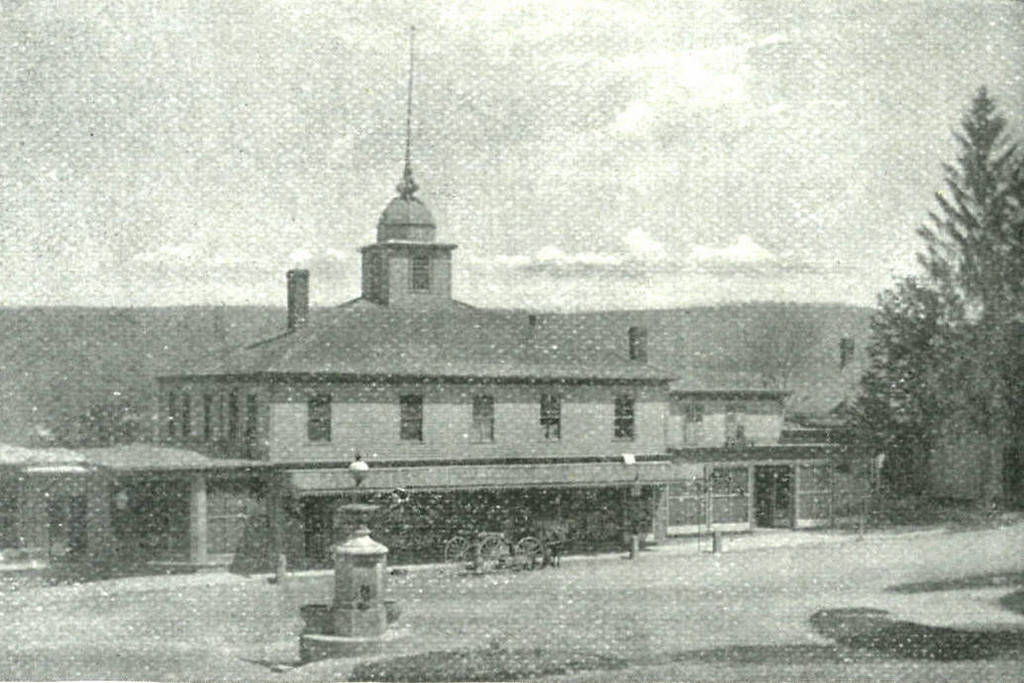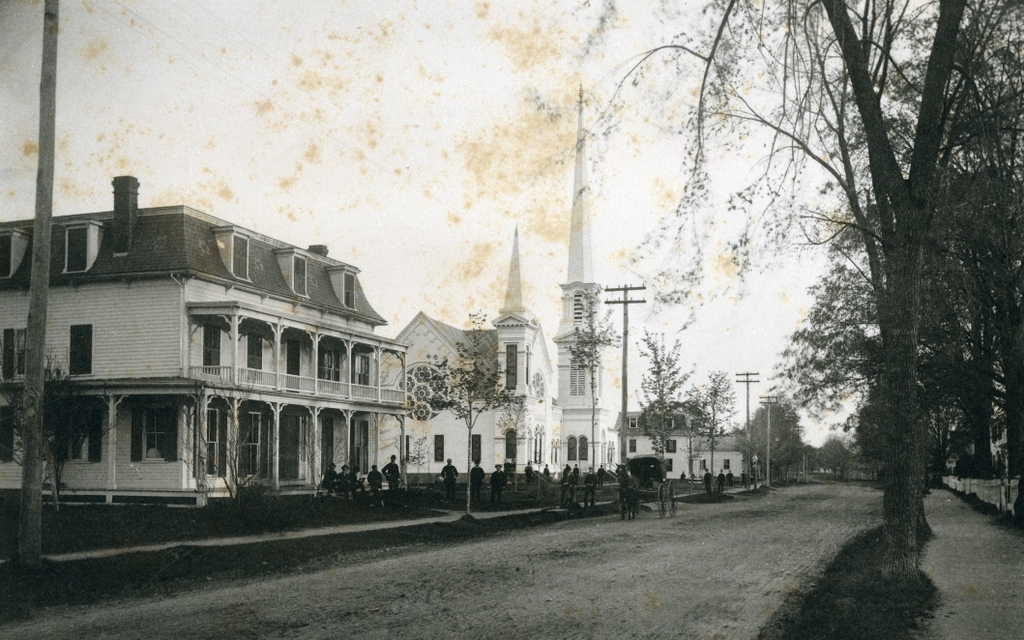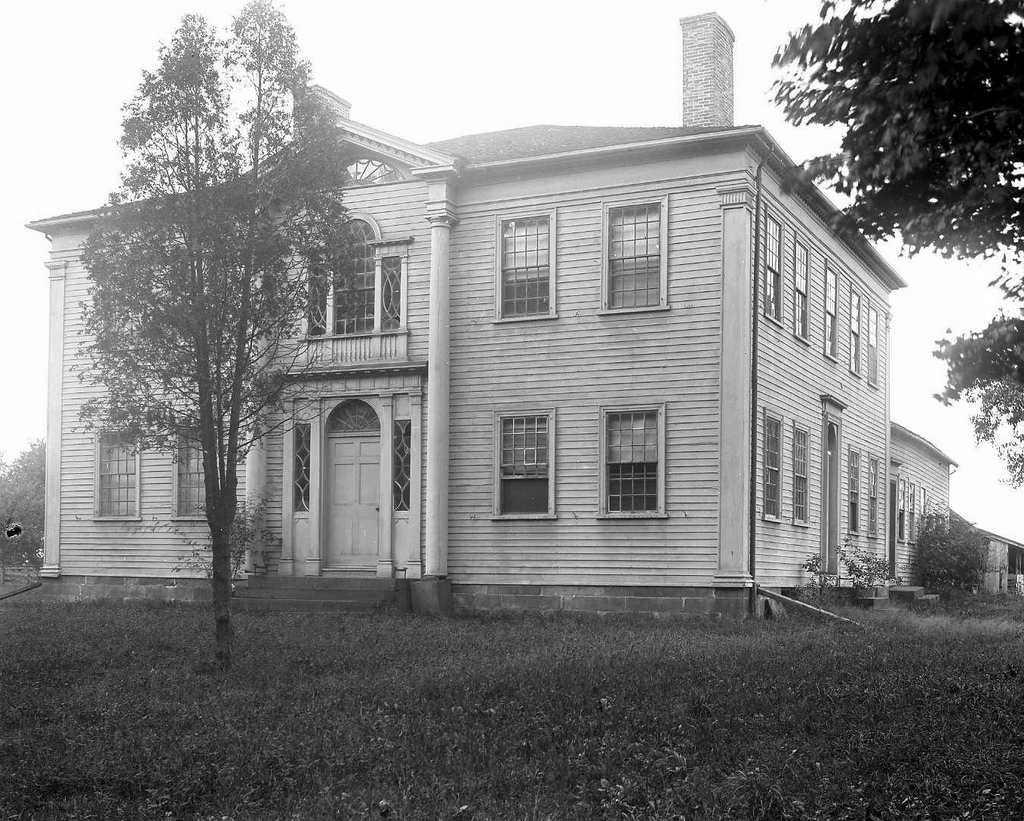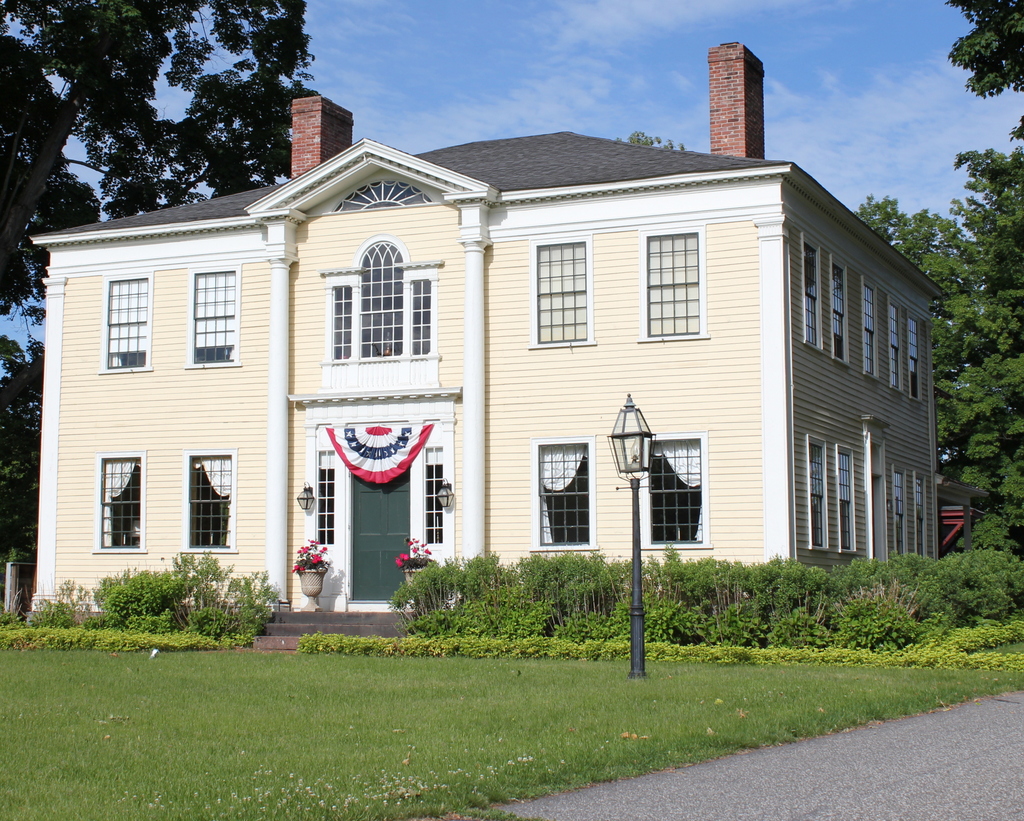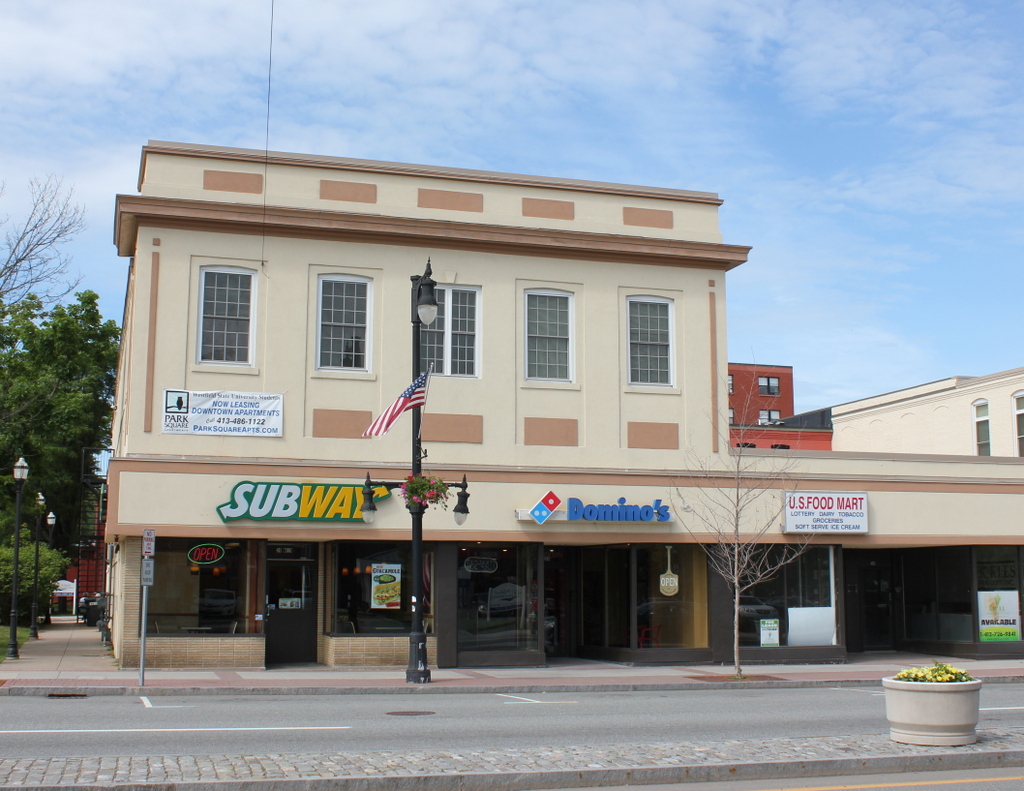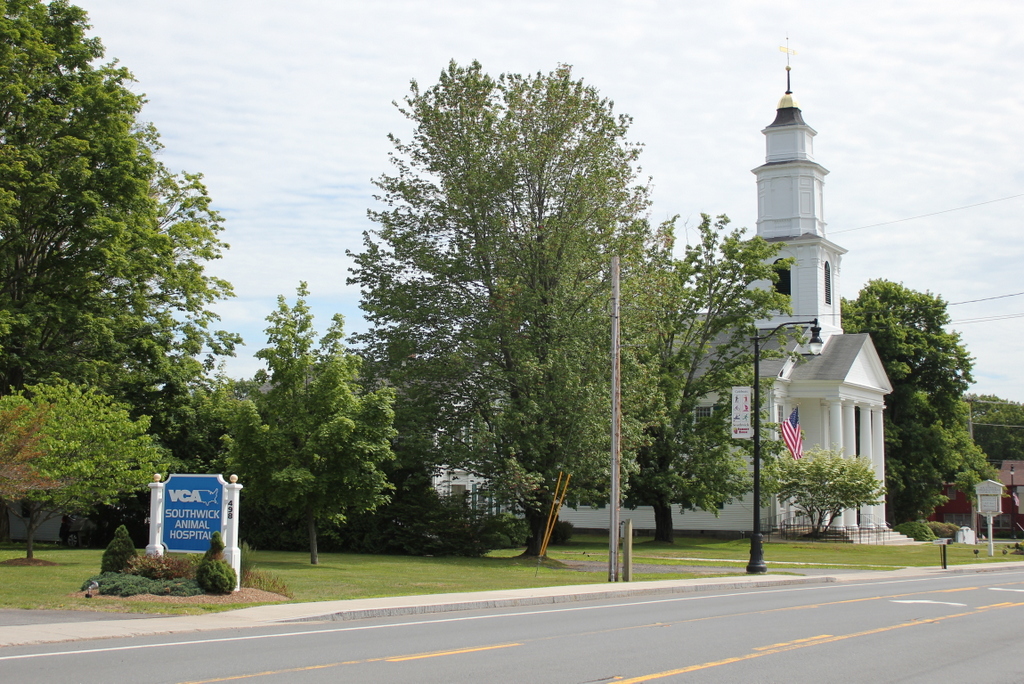The company store for Flynt Granite Company on Main Street in Monson, around 1892. Photo from Picturesque Hampden (1892).
The scene in 2015:
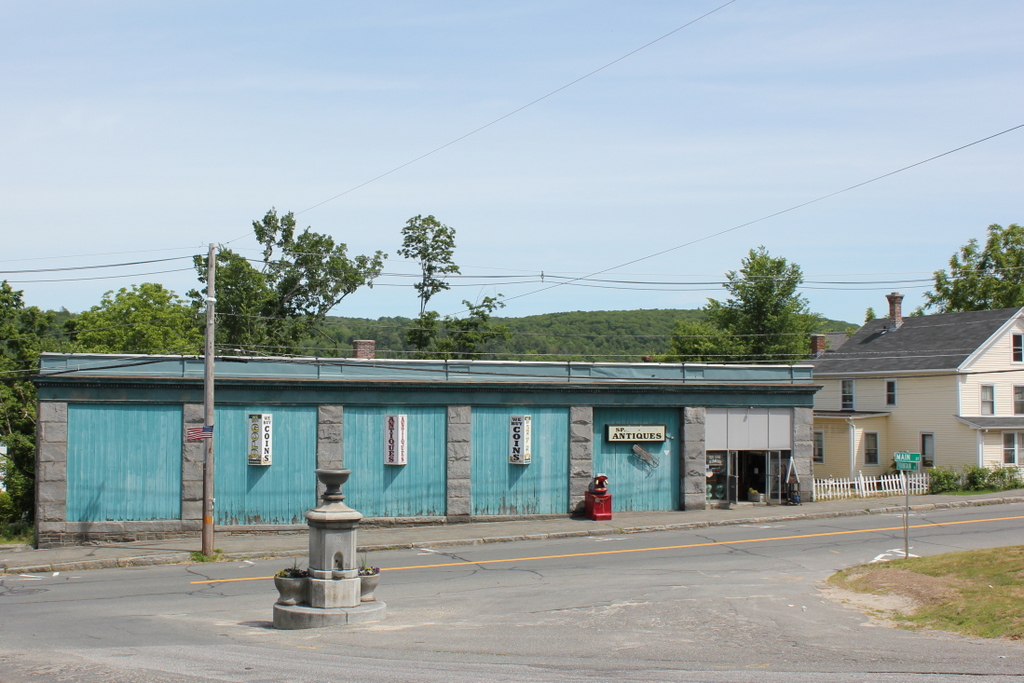
This location in Monson has been used for a variety of commercial purposes over the years, beginning in the 1860s when E.E. Towne opened a general store in the building in the first photo, which was known for some time as Towne’s Block. By the time the first photo was taken, though, the store had changed hands, and was owned by Flynt Granite Company. It was the company store for the quarry, which was located a little north of the center of town and was one of the town’s largest employers, with nearly 500 workers in 1900. The original building burned in 1914, and the following year the store reopened in the present-day building. It was owned by the granite company until 1935, when the quarry closed. Since then, the building has been used as a tavern, bowling alley, and currently as an antique store.
The one thing that has remained the same since the first photo was taken is the Flynt Memorial Fountain, which was given to the town in 1882 by quarry owner William N. Flynt, as a watering trough for horses. Today, it is still in the same location, at the intersection of Main and Fountain Streets, although it is now used for decoration rather than as a place for horses to drink water.

